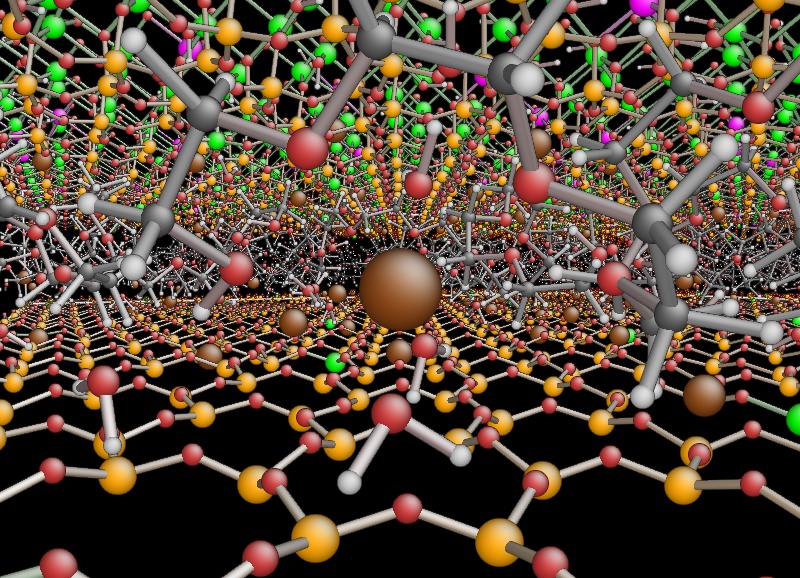Computational Science: Materials Science
Planned start: Fall 2018

Why Computational Materials Science
Materials science is the study of materials, their design and properties. In computational materials science we use the computer and computational tools to address basic questions in materials science. You learn to use the computer to model materials from the atomic to the macroscopic scale.
The Computational Materials Science study option
Numerical simulations represent nowadays an effective experimental tool in materials science. Materials can be designed and studied computationally before they are produced physically. However, this requires continous development of new theory, methods and approaches addressing material behavior from the atomic scale to macroscopic scales. Indeed, many new discoveries are currently done in the realm of metamaterials, that is materials that are structured across several scales to produce specific properties, as well as in nature-inspired materials, which are materials that are designed based on biological materials or structures.
In the computational materials science study option, the computational modeling of materials plays a central role. You can work on large scale atomic simulations using molecular dynamics methods with reactive potentials that allow you to build and study metamaterials with novel mechanical and chemical properties. You can study geological and biological materials and their interactions with water and salts, for example by studying optimal desalination membranes using molecular dynamics simulations, super-fast transport in nano-scale channels in the Earth's crust, or the formation of biologically active materials such as biocement.
Computational materials science may require very large scale simulations, providing you with skills in setting up, running and analyzing simulations on the worlds largest supercomputers, with possibilities for international student exchange periods at one or more of our international partners.
Study environment
This is new program at the University of Oslo and through various activities, spanning from common meetings and field trips to various social gatherings, we will gradually build up a top learning environment where you will thrive as a student and learn to develop your scientific creativity. The University of Oslo offers a rich and active student environment with more than 200 student led activities and organizations.
Studies abroad
All study options offer possibilities for stays abroad. Planning a semester or more abroad or performing parts of your thesis at a collaborating institution is something we highly recommend. As a student in this program you have a number of interesting international exchange possibilities. The involved researchers have extensive collaborations with other researchers worldwide. These exchange possibilities range from top universities in the USA, Asia and Europe as well as leading National Laboratories in the USA. Don't hesitate to get in touch with the contact person of your study option in case you plan to spend some time abroad. Studies at other institutions can be planned from the very first semester of this Master of Science program.
Students at the University of Oslo may choose to take parts of their degrees at a university abroad. The University of Oslo has exchange agreements with other universities in different parts of the world. The MN Faculty has additional exchange agreements with many universities abroad.
Career prospect
A significant aspect of this program is the ability to offer new educational opportunities that are aligned with the needs of a 21st century workforce. Many companies are seeking individuals who have knowledge of both a specific discipline and computational modeling. And candidates who are capable of modeling and understanding complicated systems in natural science, are in short supply in society. The computational methods and approaches to scientific problems that you will learn when working on your thesis project are very similar to the methods you will use in later stages of your career. To handle large numerical projects demands structured thinking and good analytical skills and a thorough understanding of the problems to be solved. This knowledge makes you unique on the labor market.
Career opportunities are many, from research institutes, universities and university colleges and a multitude of companies. The program gives an excellent background for further studies, with a PhD as one possible goal.
The program has also a strong international element which allows students to gain important experience from international collaborations in science, with the opportunity to spend parts of the time spent on thesis work at research institutions abroad.